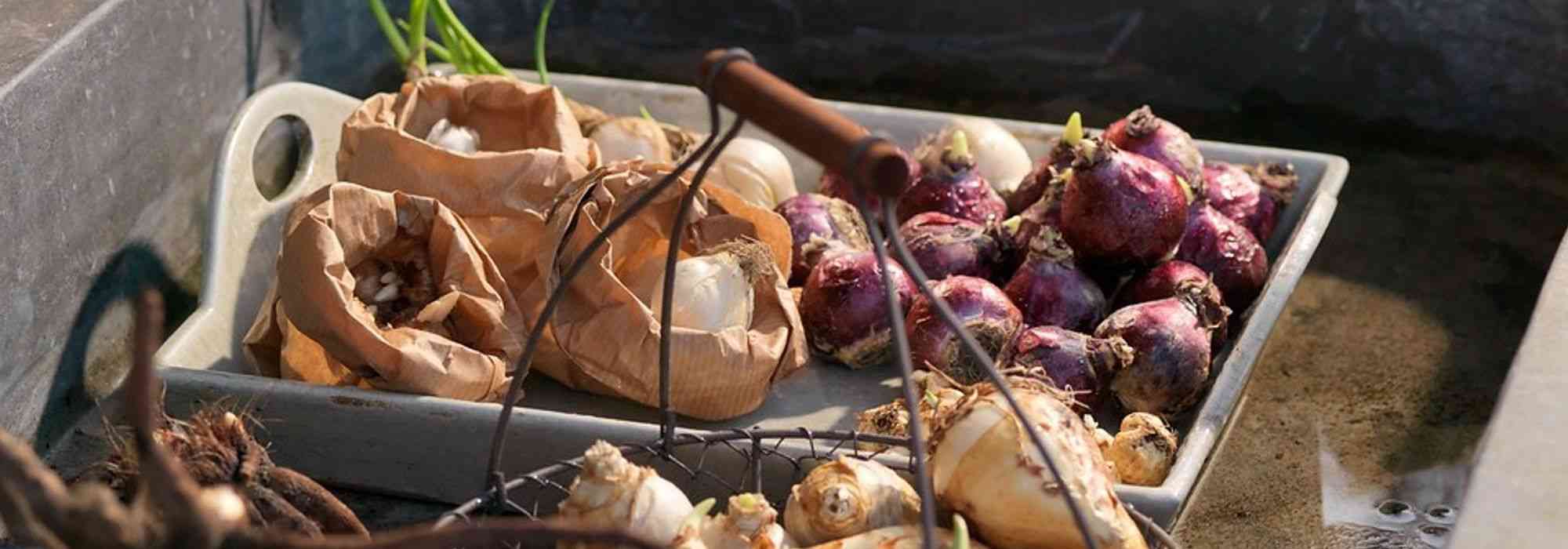
How to store bulbs before and after flowering?
Our practical and useful tips!
Contents
Have you bought bulbs but don’t want to plant them straight away after purchase and are wondering how to store them? In your garden, brilliant flowering has given way to withered flowers and unsightly yellowing foliage? While most spring bulbs are fairly hardy — such as crocuses, daffodils and botanical tulips — and can remain in the ground, many summer-flowering bulbs, more susceptible to frost and disease, need to be lifted, unless of course you live in an area where severe frosts are not a concern. It is therefore necessary to lift them and store them in a safe place before replanting to enjoy magnificent flowers again the following year.
Here are some tips for storing your spring bulbs as well as your summer-flowering bulbs!
Which bulbs should be lifted?
Not all bulbs can remain in the ground. Distinguish spring-flowering bulbs, which for the most part can remain in place for years, from summer-flowering bulbs, which often need to be lifted, cleaned and brought indoors for winter protection from frost.
- bulbs you can leave in the ground: all small bulbs such as crocuses, squills, muscari, anemone blanda, ipheions, snowdrops but also daffodils, narcissi, fritillaries, camassias, lilies and botanical tulips. They will naturalise, forming ever more floriferous carpets year after year and will proliferate with minimal care.
- bulbs that should be lifted in colder regions: most summer bulbs and tubercules such as dahlias, cannas and gladioli, which are frost-tender and will not survive severe frosts. Do the same for hyacinth bulbs, ranunculus, Dutch irises and especially for large-flowered tulip bulbs, which are not afraid of frost but are more susceptible to diseases (fusarium, botrytis) and take up space unnecessarily after flowering. It is wise to lift and store them for planting the following year and to replace them with other plants during summer.

Freshly lifted dahlias
When is the right time to lift bulbs?
Lifting depends on the plant and its flowering period; spring bulbs can be lifted at the end of spring while summer-flowering bulbs will be dug up at the end of autumn. Take some precautions as bulbs should not be lifted at just any time!
The mistake to avoid: faced with the disheartening sight of more or less collapsed leaves that now dull your lovely spring beds, resist the temptation to quickly free up space to plant other more vigorous annuals or perennials! These bulbs should remain in the soil after flowering for about six more weeks to replenish their reserves and ensure good flowering the following spring. Be patient, even if in the meantime your beds look shabby. As long as leaves are still green or have not completely yellowed, do not touch them! Simply cut off faded flowers after flowering.
Only lift bulbs when leaves are completely yellowed, collapsed and dry.
If you absolutely hate untidy beds, you can lift bulbs before foliage yellows.
Dans ce cas, procédez de la façon suivante :
- lift them (keeping leaves and stems),
- sort them and keep only the best,
- heel them in a corner of the garden under a layer of soil,
- when foliage has completely yellowed, lift them out of the soil.
Discover other Summer flowering bulbs
View all →Available in 1 sizes
Available in 1 sizes
Available in 1 sizes
Available in 2 sizes
Available in 1 sizes
Available in 1 sizes
Available in 1 sizes
Available in 2 sizes
Available in 2 sizes
Available in 1 sizes
How to lift bulbs?
Flowering bulbs are ready to be lifted when leaves come away easily when pulled.
- Cut stems as close as possible to base of bulb with pruning shear
- Loosen soil around bulbs and, using a fork or spade, lift them out, taking care not to damage them
- Cut roots and any remaining leaves, remove dried epidermis
- Remove any bulblets present on underside of bulbs
- Discard discoloured, soft or diseased bulbs
- Leave them to dry for a few days in a dry, well-ventilated place, then brush bulbs to remove as much soil as possible (do not rinse them with water!)
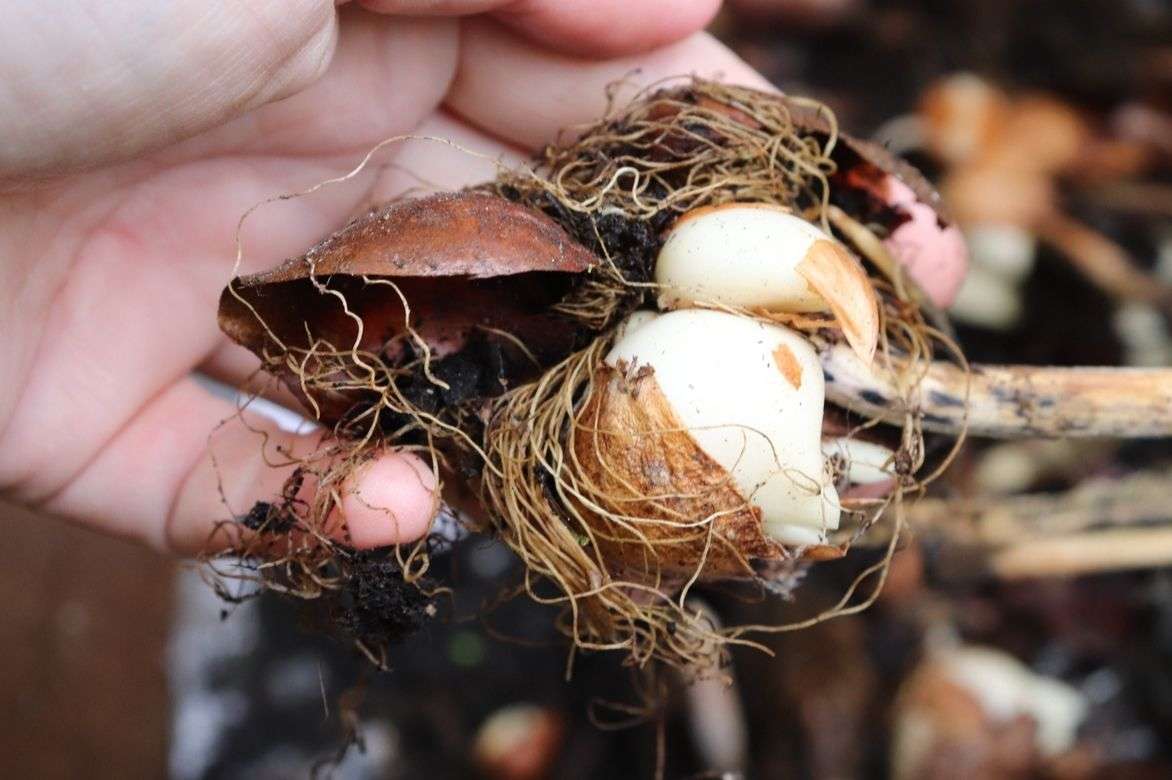
Lifting tulip bulbs
Read also
How to protect bulbs from rodents?Where and how to store bulbs?
Store bulbs in a dry, well-ventilated but unheated place, protected from frost (where temperature does not fall below zero) such as a cellar, a larder or a garage. Place should be as dark as possible, to prevent bulbs from sprouting before their time!
To store them, several options:
- You can simply leave bulbs exposed to the air, spread on newspaper in a tray, a crate or kept in paper bags
- Wrap them individually in newspaper
- Store them in old stockings or in an old onion filament that you hang up
- You can also keep them in dry turf or in wood shavings
Advice :
- Check bulbs regularly for shrivelled or mouldy specimens and discard any that are
- Don’t forget to label them, as it’s not always easy to remember at planting time
- Make sure bulbs are well protected from rodents (read our advice sheet to discover “How to protect bulbs from rodents”).
- Under these conditions, you can keep bulbs for up to twelve weeks before replanting outdoors or in pots.
What should I do with my unplanted bulbs?
If you have bought bulbs but do not wish (or cannot) plant them immediately, you can keep them until the next planting season: store them under the same conditions as bulbs lifted from the ground, making sure to remove the packaging first.
You can also place them in the vegetable drawer of the fridge (the temperature must not fall below 10 °C).
- Subscribe!
- Contents
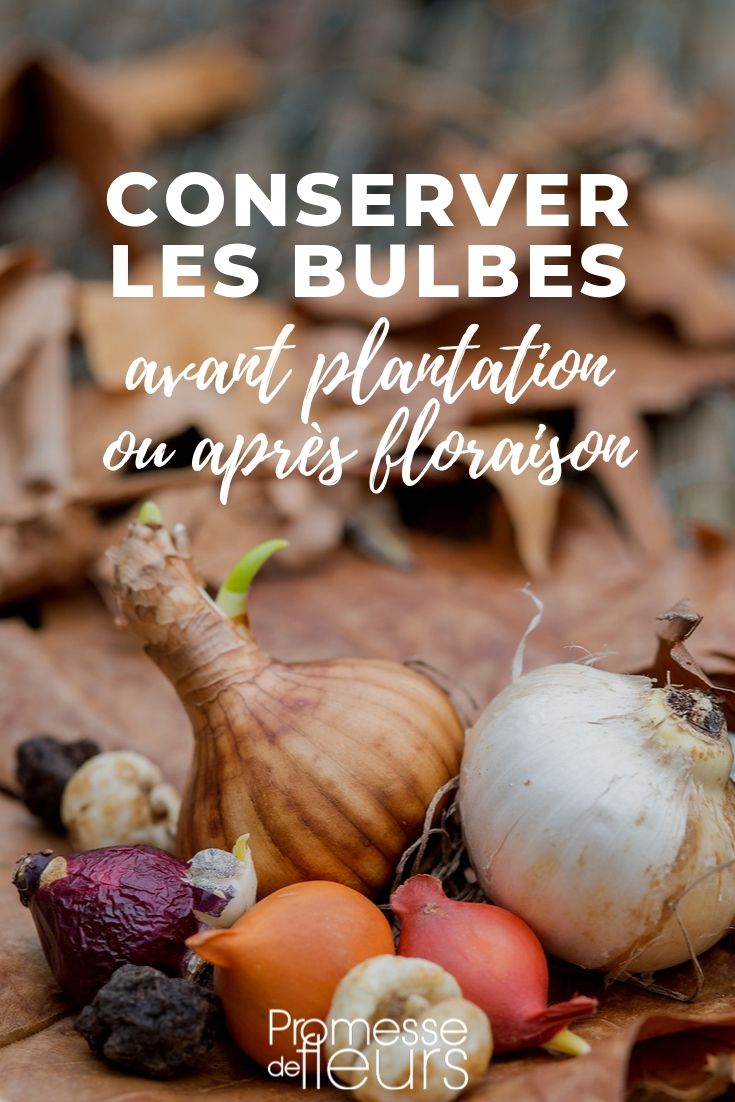































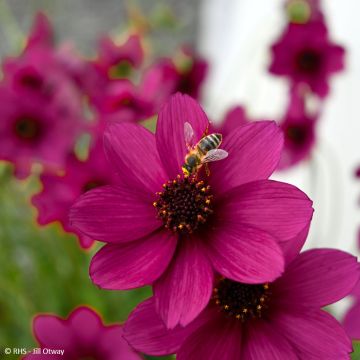
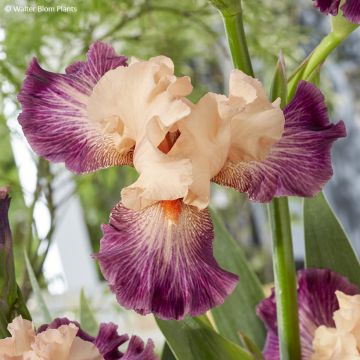

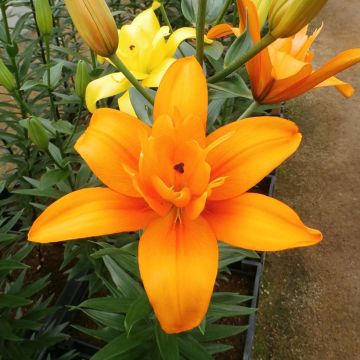
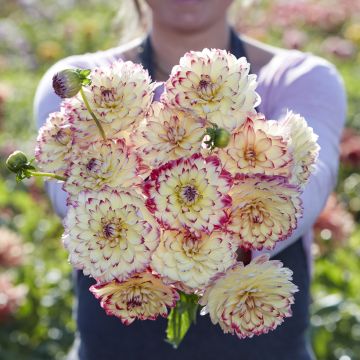
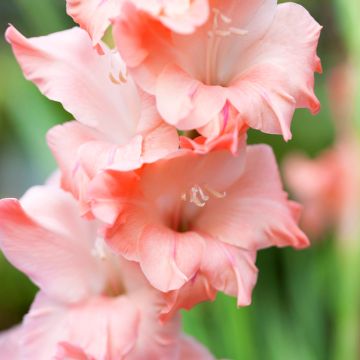
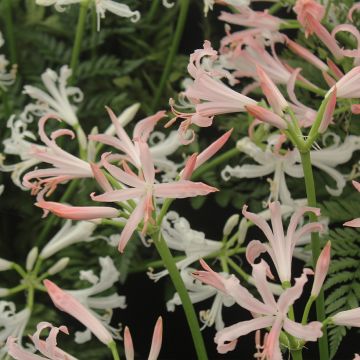


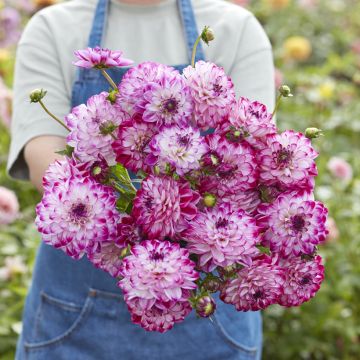
Comments